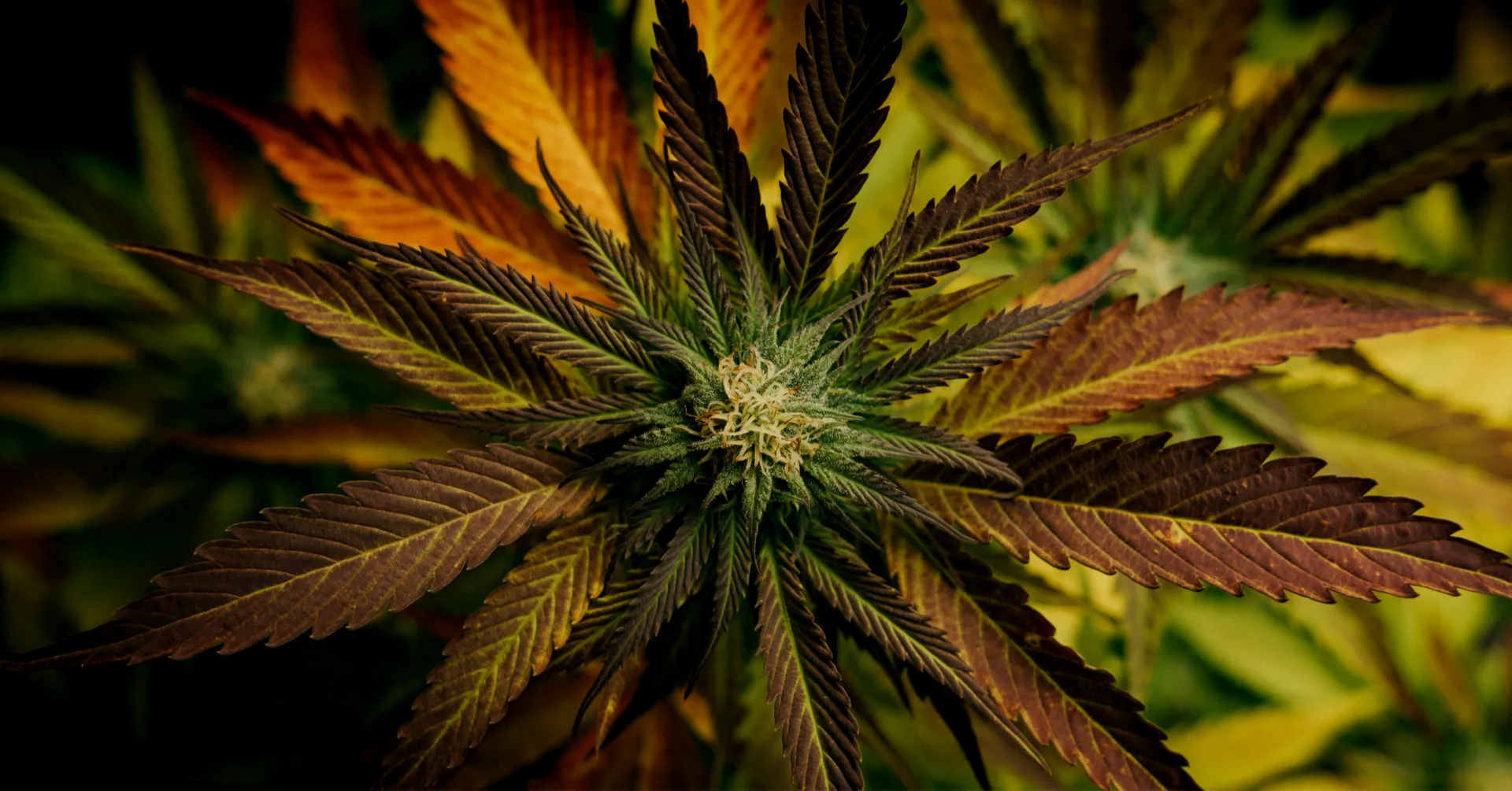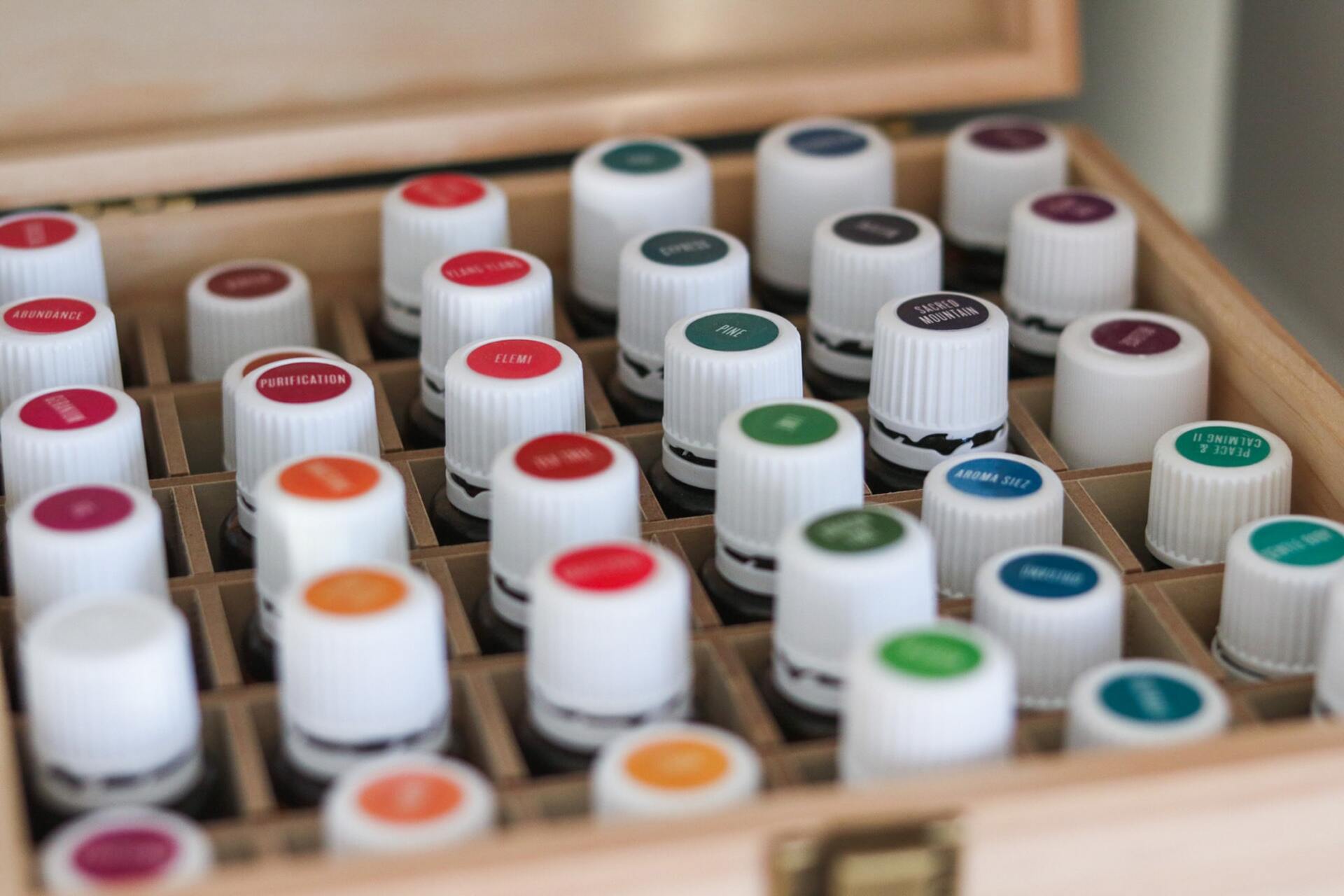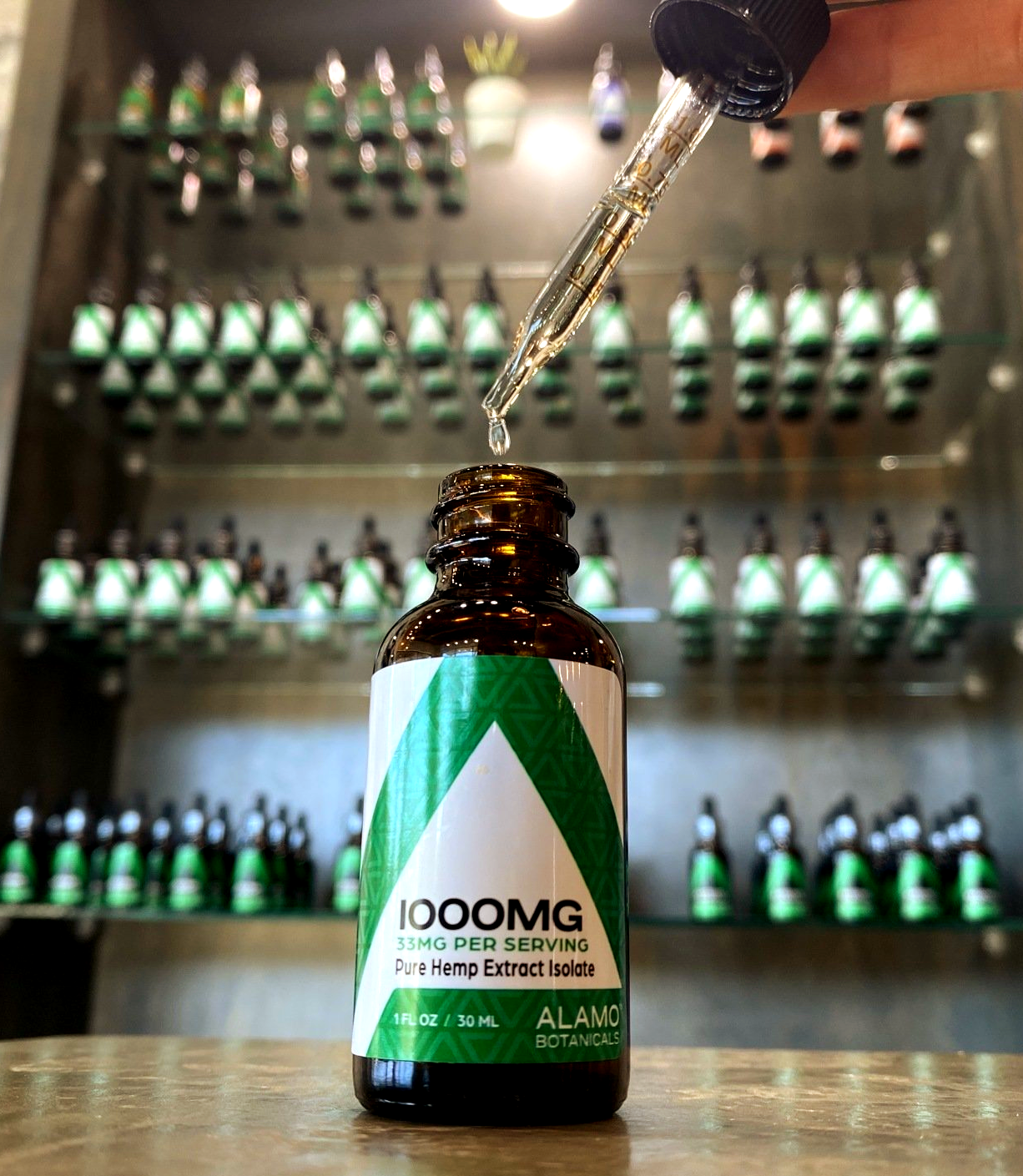Learn
Education is important to us.
We have dedicated our day to day interactions with customers to assure they leave with two things, knowledge on the product they purchased and comfort knowing it is sourced from somewhere they can trust. For too long now, there has been a stigma attached to to the cannabis plant due to a misunderstanding of its uses and benefits to both humans and animals. At Alamo Botanicals we are passionate about educating people with truth about Hemp and CBD in our stores, online, and through our many partners/physicians.
Those who visit our stores are guided by a Certified CBD Specialist to help them find the product that fits their lifestyle best as well as information on how to use it properly. Every day we meet new people who first visit us with zero knowledge about CBD and walk out with enough information to start sharing with their friends and family. Recommendations through word of mouth is how we've continued to reach new people and introduce them to alternative methods to achieve a better quality of life.
We commit ourselves to knowing exactly what goes into our products and testing every batch to ensure quality and gain trust through transparency. We provide lab results also known as a Certificate of Analysis (COA) with every product. As the Hemp industry rapidly evolves, we hope you are able find comfort knowing we will always communicate new laws and regulations in an effort to keep you safe and up to date on the latest industry news.
On this page of our site you can read through educational articles related to Hemp and CBD from non bias sources that are reputable across the Hemp community. We appreciate you taking the time to educate yourself and most importantly spreading your knowledge with those you care about. Together we are ending the stigma.




Frequently Asked Questions
- Is inhaling (vapes/joints/nasal sprays/etc.) CBD the same as ingesting (tincture/tablet/edible) it?
Simply put – no. While the CBD in a vape pen and the CBD in a tincture is the same exact chemical, they are absorbed/metabolized differently depending on the route of administration. One form may be more appropriate over the other according to your needs. Consult with one of our CBD Specialists to help pick the right product for you.
*** These statements have not been evaluated by the Food and Drug Administration. Our products are not intended to diagnose, treat, cure or prevent any disease.
- How do I know how much CBD to take?
Dosing CBD (or any other cannabinoid for that matter) is not an exact science. Likewise, one individual may metabolize a substance much differently than another. With that in mind, we recommend starting between 17-33 milligrams (mg) a day – the standard doses of our 500mg and 1000mg tinctures, respectively – and adjusting according to your body’s response. Our CBD Specialists are always available to help you establish a more personalized starting point.
*** These statements have not been evaluated by the Food and Drug Administration. Our products are not intended to diagnose, treat, cure or prevent any disease.
- What is the difference between “Full Spectrum” and “CBD” or “Isolate”?
In addition to CBD and THC (less than 0.3% in hemp by definition), two of the most well-known cannabinoids, there are hundreds of other cannabinoids found naturally in cannabis. Products marketed as “Full Spectrum” contain at least trace amounts of a handful of these other cannabinoids such as THC, CBG, and CBC - to name a few. In contrast, a product that is marketed as “Isolate” contains only one singular cannabinoid (generally CBD) in its isolate form. Consult with one of our CBD Specialists if you’re unsure which product or products would be best for you.
*** These statements have not been evaluated by the Food and Drug Administration. Our products are not intended to diagnose, treat, cure or prevent any disease.
- Is it illegal to smoke/vape CBD products?
Although hemp, its constituents, and their consumption are no longer federally illegal, many aspects pertaining to its use are still grey areas and regulatory and law enforcement agencies have not all fully ironed out how to govern its sale, possession, and use – one of the biggest grey areas currently being smokable or vaped hemp products. We recommend being fully aware of your local jurisdiction’s laws pertaining to hemp and its use before buying and using hemp-based products.
*** These statements have not been evaluated by the Food and Drug Administration. Our products are not intended to diagnose, treat, cure or prevent any disease.
- Can I use a CBD tincture and topical product at the same time?
Yes! It is not uncommon to use one or more CBD delivery methods at a time.
*** These statements have not been evaluated by the Food and Drug Administration. Our products are not intended to diagnose, treat, cure or prevent any disease.
- Can CBD make me “high”?
No, CBD cannot get you high.
*** These statements have not been evaluated by the Food and Drug Administration. Our products are not intended to diagnose, treat, cure or prevent any disease.
- Why does CBD oil make me tired?
Drowsiness is a potential side effect of taking CBD. Try lowering your dose or only taking CBD before bed if this is the case for you.
*** These statements have not been evaluated by the Food and Drug Administration. Our products are not intended to diagnose, treat, cure or prevent any disease.
- Is all CBD Oil the same?
Not at all! The market is full of a plethora of CBD oils – some good and some bad. The difference doesn’t only apply to the quality though. CBD Oil can come in many different forms (MCT oil, hemp seed oil, olive oil, etc.) and with many different additives or lack thereof. Our Hemp Extract Isolate Tinctures are made with 99+% pure CBD Isolate, high quality organic MCT oil, and a blend of botanically sourced plant terpenes. Additionally, we rigorously test our products using an ISO 17025 certified third-party testing lab so that we can’t only claim our products are high-quality, but we can show it! Speak with one of our CBD Specialists and learn the difference for yourself.
*** These statements have not been evaluated by the Food and Drug Administration. Our products are not intended to diagnose, treat, cure or prevent any disease.
- Can I take too much CBD?
Short answer, yes – but unlikely in a dangerous manner. Taking more than your therapeutic dose could potentially have you feeling some unwanted side effects such as fatigue or changes in your appetite. However, CBD has a famously low toxicity level (known as an LD50 – which means a lethal dose in 50% of an observed population). Currently there is no precisely identified toxic dose of CBD in humans. Studies done in the 80s and further back suggest one of average body mass would need to take roughly 20,000 mg in an extremely short period of time to result in any potentially fatal effects, whereas the highest concentration Hemp Extract Isolate (our 5000 mg Tincture) we currently offer is only 166.66 mg per dose. Currently however, there is no known LD50 for any cannabinoids in humans, including CBD and the Americans for Safe Access (ASA) estimates someone who smokes cannabis would need to consume roughly 1,500 lbs. of cannabis in under 15 minutes to potentially induce a lethal response. All in all, an individual taking CBD products regularly and as directed will never ever experience any toxic side effects.
*** These statements have not been evaluated by the Food and Drug Administration. Our products are not intended to diagnose, treat, cure or prevent any disease.
- Will CBD cause me to fail a drug test?
CBD will not cause you to fail a drug test. However, some CBD products marketed as Full/Broad Spectrum can contain other cannabinoids aside from CBD (including THC up to 0.3%) that could potentially cause you to fail a drug test (CBN can also show up as a false positive). If drug screenings are a concern for you, stick to products that only contain CBD to be safe. Our CBD Specialists can help you select one of our lab verified products so you can feel comfortable knowing you won’t fail any drug tests.
*** These statements have not been evaluated by the Food and Drug Administration. Our products are not intended to diagnose, treat, cure or prevent any disease.Describe the item or answer the question so that site visitors who are interested get more information. You can emphasize this text with bullets, italics or bold, and add links.
- Why don’t I feel anything with my CBD oil? When will I see results?
Generally, there isn’t anything to “feel” while taking CBD, much like you don’t “feel” Vitamin C when taking that. However, it is usually recommended to allow yourself 3-6 weeks of regular use to see any noticeable benefits – everyone reacts differently to a given substance. That being said, if the reason you’re taking CBD requires a more immediate approach, try a different form! CBD oil is meant more as a supplement and not intended to be fast acting. Consult with one of our CBD Specialists to find a product that fits your needs more precisely.
*** These statements have not been evaluated by the Food and Drug Administration. Our products are not intended to diagnose, treat, cure or prevent any disease.
- I’m currently taking medications. Can I still take CBD?
CBD is generally safe to take while on most medications. However, that is not always the case and there are certain interactions that should be avoided. Consult your pharmacist or physician with specific concerns as they are the only entities legally capable of making recommendations regarding your medications.
*** These statements have not been evaluated by the Food and Drug Administration. Our products are not intended to diagnose, treat, cure or prevent any disease.
- What’s the difference between capsules and tinctures?
A tincture is more readily absorbed whereas a capsule needs additional time to be broken down in the gut. Speak to one of our CBD Consultants to find which dosage form may be more appropriate for you.
*** These statements have not been evaluated by the Food and Drug Administration. Our products are not intended to diagnose, treat, cure or prevent any disease.
Open Hours
- Mon - Sat
- -
- Sunday
- -
Alamo Botanicals. All Rights Reserved.
These statements have not been evaluated by the Food and Drug Administration. These product are not intended to diagnose, treat, cure, or prevent any disease.






